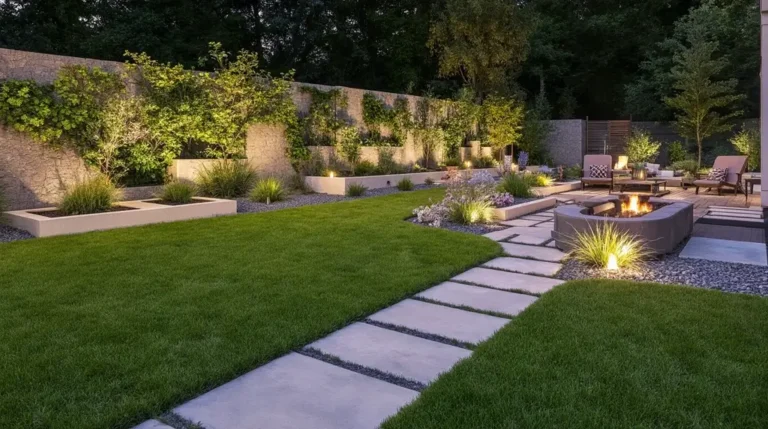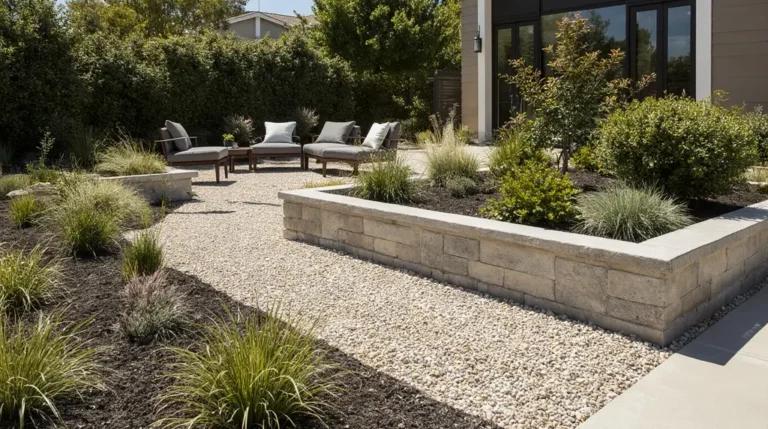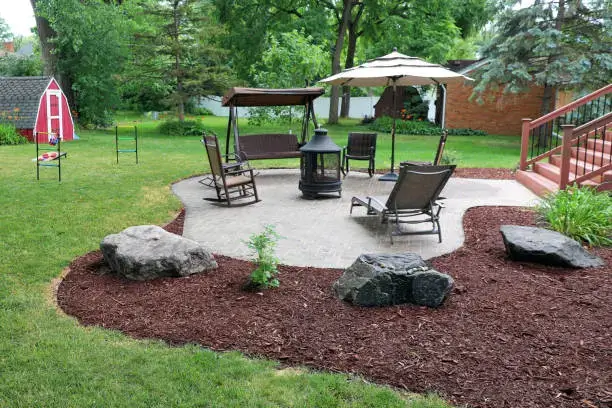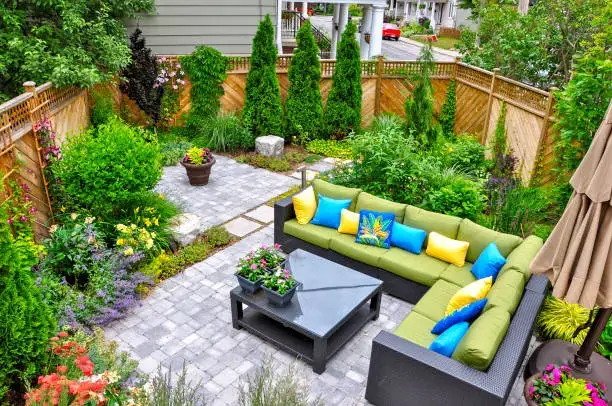low maintenance small rock garden ideas That Wows Now
Table of Contents
Introduction: The Magic of Low-Maintenance Rock Gardens

Imagine transforming a neglected corner of your yard into a stunning Landscaping Trends feature that requires minimal upkeep yet delivers maximum visual impact year-round. That’s the beauty of low maintenance small rock garden ideas—they’re revolutionizing how homeowners approach outdoor spaces. Rock gardens, also known as rockeries, artfully mimic natural rocky landscapes found in mountainous regions, offering captivating texture, architectural drama, and enduring interest through every season. Complete your dream garden with our handpicked Garden Design & Landscaping essentials that make outdoor spaces stylish and practical.
What makes these gardens particularly appealing? Consider these compelling benefits:
Low Maintenance: Rock garden design is ideal for busy homeowners who crave beautiful outdoor spaces without dedicating every weekend to yard work. Once established, these gardens practically care for themselves.
Adaptable: Whether you’re working with expansive displays, compact backyards Makeover, cozy patios, or even tiny balcony corners, rock gardens scale beautifully to fit any space constraint.
Biodiversity: Rocks aren’t just decorative—they regulate temperature fluctuations and create varied microhabitats that attract beneficial wildlife, from pollinators to small reptiles.
Drought Resistance: These gardens provide the perfect home for drought-tolerant plants like alpines, succulents, and hardy herbs, making them environmentally responsible choices in our changing climate.
Phase 1: Planning and Preparation (The Essential Foundation)

Choosing the Right Site and Aspect
The foundation of successful low maintenance landscaping starts with proper site selection. Here’s a critical mistake many beginners make: underestimating sunlight requirements. Most rock-loving alpine plants require full sun exposure—that means more than six hours of direct sunlight daily. South-facing slopes are ideal locations, as they provide the intense light and warmth these plants crave.
The Golden Rule: Drainage is Absolutely Critical
Alpines and similar rock garden plants often succumb to root rot in winter wet conditions rather than cold temperatures. Poor drainage is the number one killer of rock garden plants. Avoid sites with standing water or compacted soil that doesn’t drain freely.
If you’re dealing with soggy or dense soil, don’t despair. You can amend existing soil by incorporating compost, pumice, perlite, or vermiculite to create a free-draining composition that mimics the gritty, fast-draining soils of mountain environments.
Selecting and Placing Rocks Naturally
Avoid the “clashing materials” mistake that plagues amateur rock garden ideas. Use one or two similar rock types for a cohesive, naturalistic design that looks intentional rather than random. Steer clear of rounded beach or river boulders—they create an outdated aesthetic that screams “1990s landscaping.”
The best place to source boulders is your local quarry, where you’ll find rocks in all shapes and sizes, often free of algae and reasonably priced.
Placement Principles for Natural-Looking Results:
- Place the largest rocks first as anchor points that define your garden’s structure
- Always bury at least one-third of each rock to ensure stability and create that centuries-old, weathered appearance
- Group rocks randomly to mimic natural geological formations—the “Rule of Three” creates organic groupings that feel balanced
- Choose rocks scaled appropriately for your project to avoid overwhelming small spaces
- Strategically position boulders to create channels that divert water flow and minimize erosion
Phase 2: 18+ Stunning Small Rock Garden Design Ideas (Visual Inspiration & Practical Application)

Designs Maximizing Small or Urban Spaces
1. Micro Rockery/Container Garden: Perfect for apartment dwellers or those with limited outdoor space, this approach uses small pots or containers filled with tiny succulents and cacti, framed with delicate slate pieces. It’s highly versatile, portable, and ideal for windowsills or balconies.
2. Vertical Rock Garden: When ground space is precious, think vertically. Utilize vertical planters or rock walls to conserve floor space in compact areas. Plant small, hardy species like creeping thyme or sedums in crevices for a living wall effect.
3. Front Yard Rock Garden (Curb Appeal): Transform your entryway with a low-maintenance scheme that enhances curb appeal and potentially increases property value. This approach makes a strong first impression while requiring minimal ongoing care.
4. Rock Border Garden: Use rocks to define pathways or edges around existing garden beds, providing clear structure and preventing grass encroachment while adding visual interest.
Tranquil and Minimalist Designs
5. Japanese Zen Garden (Karesansui): This contemplative style relies heavily on dry materials like sand and stone, meticulously raked to represent flowing water. The design embraces asymmetry and minimalism to create meditative, serene spaces that calm the mind.
6. Cacti and Rock Arrangement: Create a striking, desert-inspired landscape using various cacti types combined with gravel or sand for excellent drainage. These arrangements require minimal watering and thrive in hot, sunny locations.
7. Modern Monochrome Palette: Embrace contemporary aesthetics by using uniform stone sizes in a monochrome palette—think sophisticated greys and muted greens. Combine variegated stone slabs with sculptural succulents for a clean, elegant look that feels upscale.
Functional and Feature-Focused Designs
8. Rock Garden with Water Feature/Pond: Lining a shallow pond with stones encourages wildlife visits and creates a beautiful focal point. Add piled rocks leading down to the water’s edge for easy animal access and escape routes.
9. Sloped Terrain/Terracing: Transform challenging steep slopes into tiered mini-mountainsides using terracing methods and stone retaining walls. This prevents soil erosion while maximizing planting areas and creating dramatic elevation changes.
10. Framing Existing Structures: Work with what you have by utilizing existing stone walls or steps, tucking succulents and shallow-rooted plants into natural planting pockets for an integrated look.
11. Surrounding a Seating Nook: Create a cozy retreat that doubles as a raised bed planter, providing peace and privacy while allowing you to admire plants at eye level—perfect for morning coffee or evening relaxation.
12. Gravel Pathway Garden: Use gravel as the base material, lining edges with rocks and low-growing, rockery-friendly plants like lavender to create fragrant, attractive pathways.
13. Stepping Stone Rock Garden: Incorporate flat stones or concrete stepping stones to create functional paths surrounded by gravel and low-maintenance plants that soften the hardscape.
14. Hiding Unsightly Objects: Strategically surround features like hot tubs, water collection barrels, or storage sheds with natural rockery to conceal them from sight while adding beauty.
Designs Focused on Specific Plant Types
15. Rock and Succulent Garden: Arrange various rocks with a diverse selection of low-maintenance succulents that thrive in rocky conditions, creating sculptural displays that change with the seasons.
16. Mini Alpine Garden: Authentically mimic natural alpine regions using small rocks and gravel combined with specialized alpine plants like saxifrage or dwarf conifers for a mountain meadow feel.
17. Herb Rock Garden: Utilize rocks to create terraces for hardy herbs like thyme, rosemary, and oregano, combining beauty with practicality. The rocks provide the excellent drainage these Mediterranean herbs require.
18. Native Plant Rock Garden: Selecting plants adapted to your local climate significantly reduces maintenance while supporting local wildlife and pollinators—an environmentally conscious choice.
19. Moss and Lichen Growth: Encourage natural growth on stones using shady, damp conditions. Lichen provides food and shelter for invertebrates while regulating water and humidity in your garden ecosystem.
20. Ornamental Grasses Integration: Contrast hard rock surfaces with tall, fluffy ornamental grasses like Carex elata ‘Aurea’ or Imperata cylindrica ‘Red Baron’ to add graceful movement and vertical height.
Phase 3: Essential Plants for Long-Term Success

Structure your rockery using three main plant categories for year-round interest and minimal maintenance:
Evergreen Anchor Plants (Year-Round Form)
These provide essential structure and visual form during all seasons, ensuring your garden never looks bare or forgotten. Consider dwarf varieties of conifers, compact shrubs like boxwood, dwarf Japanese maples, hollies, or Pittosporum tobira. These plants establish the “bones” of your garden that remain attractive even in winter.
Seasonal Flowering Alpines (Color Bursts)
These stars introduce vibrant color explosions that flourish in dry conditions. For sunny locations, try perennials like aubrieta, saxifraga, alpine phlox, sea thrift, maiden pinks (dianthus), Mexican fleabane (erigeron), campanula, Centranthus ruber var. coccineus, daffodils, or crocuses. These plants deliver spectacular spring and summer blooms.
For shadier spots, consider small ferns, heucheras, woodland alpines, or hellebores that bring color without demanding full sun.
Foliage and Groundcover Plants (Texture and Movement)
These workhorses coat bare rocks with color and texture while stabilizing soil and preventing erosion. Succulents and spreading perennials like sedum (hylotelephium), sempervivum (hens and chicks), delosperma, creeping thyme, and rock cress create living carpets. Grasses like blue fescue, feather reed grass, and fountain grass add textural contrast and gentle movement.
Phase 4: Installation & Troubleshooting (Expert Advice and Common Mistakes)

Soil Amendment Mix for Optimal Drainage
Creating a free-draining blend is crucial for alpine species success. Use an equal blend of these three components:
- ⅓ Pumice, perlite, or vermiculite (provides drainage and air pockets)
- ⅓ Compost or leaf mold (adds nutrients and organic matter)
- ⅓ Native soil (maintains beneficial microorganisms)
This formula creates the gritty, well-draining medium that mimics natural alpine environments.
Planting Technique
Follow these steps for proper installation:
- Rake back or push back the gravel mulch in your planting area
- Dig a hole as deep and twice as wide as the plant’s root ball
- Position the plant and cover roots with your amended soil mixture
- Place plants in tight spots between rocks to mimic how wild mountain plants exploit every available crevice
- Replace the gravel mulch on top of the ground around plants
Avoiding Key Installation and Design Errors
The Bare Soil Mistake: Never leave soil exposed. Always mulch exposed ground with pebbles, gravel, or smooth stones to retain moisture, suppress weeds, and maintain the authentic rockery aesthetic.
Not Balancing Elements: Ensure a healthy balance of small pebbles, large rocks, and green plants. Step back and view your site from both up close and at a distance to check proportions.
Underwatering/Overwatering: New plantings need regular irrigation for the first one to two years to establish robust, drought-resistant root systems. Water every few weeks during the first year when topsoil dries out, then gradually reduce frequency.
Maintenance Guide: Keeping Your Rockery Hassle-Free
Weed Control (The Consistency Factor): Walk through your garden once every week or two to pull sprouting seedlings while they’re young and easy to remove. If weeds are producing seed heads, remove the flowers immediately to prevent future germination.
Watering Established Plants: By the third year, plantings rarely require extra irrigation as they’ve developed drought resistance. Remember that rocks absorb and radiate heat, causing surrounding soil to dry faster—you may need occasional watering during extreme heat waves.
Feeding: Minimal feeding is necessary for most alpines, which evolved in nutrient-poor environments. Shade gardens may benefit from an organic mulch layer between rocks to provide gentle nutrition.
Pruning: Minimal pruning is required—primarily removing dead material and maintaining a neat appearance. Most rock garden plants naturally stay compact.
Conclusion: Your Low-Maintenance Paradise Awaits
Low maintenance small rock garden ideas offer the perfect solution for modern homeowners seeking beautiful landscapes without demanding upkeep schedules. By following these planning principles, design inspirations, and maintenance guidelines, you’ll create a stunning outdoor space that delivers year-round visual interest while respecting your time and water resources. Whether you’re working with a tiny balcony container or transforming a challenging slope, rock garden design adapts to your unique situation while providing habitat for wildlife and a peaceful retreat for you. Start small, plan carefully, and watch your low-maintenance paradise take root and thrive for years to come.
low maintenance small rock garden ideas That Wows Now
Imagine transforming a neglected corner of your yard into a stunning Landscaping Trends feature that requires minimal upkeep yet delivers maximum visual impact year-round. That’s the beauty of low maintenance small rock garden ideas—they’re revolutionizing how homeowners approach outdoor spaces. Rock gardens, also known as rockeries, artfully mimic natural rocky landscapes found in mountainous regions, offering captivating texture, architectural drama, and enduring interest through every season. Complete your dream garden with our handpicked Garden Design & Landscaping essentials that make outdoor spaces stylish and practical.





